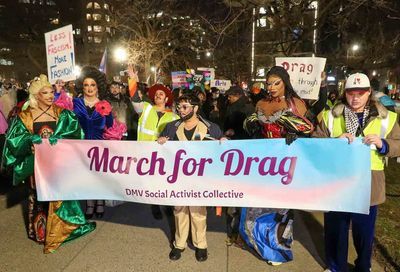HRC Examines Rising Trend of Anti-Transgender Violence
A report details the state of anti-transgender violence that resulted in the deaths of at least 33 trans or gender-nonconforming people.

The Human Rights Campaign Foundation, the educational arm of the LGBTQ civil rights organization, has released a report highlighting the ongoing trend of violence against transgender and gender-nonconforming individuals and memorializing those who have died in the past 12 months.
The report’s release coincides with today’s Transgender Day of Remembrance, which memorializes those transgender, gender-nonconforming, and nonbinary individuals who have lost their lives since November 2022.
Since 2013, HRC has recorded the deaths of 335 transgender and gender-nonconforming individuals due to violence, including at least 33 who were killed over the past year. That differs significantly from the number of transgender people killed by violence reported by the National Center for Transgender Equality — 53 — although HRC only counts confirmed homicides.
The LGBTQ rights organization also acknowledges that the actual number of trans and gender-nonconforming deaths may be higher than its own estimate, as many deaths may go unreported or the victims may be misgendered in news or police reports.
“The epidemic of violence against transgender and gender non-conforming people is a national tragedy and a national embarrassment,” HRC President Kelly Robinson said in a statement. “Each of the lives taken is the result of a society that demeans and devalues anyone who dares challenge the gender binary.”
According to an HRC analysis, nine in 10 transgender and gender-nonconforming victims were people of color, seven in 10 were transgender women, and 6 in 10 were Black transgender women. The average age of the victims who were killed in the past year was 28, with three-quarters of them being under age 35.
Regarding the spate of anti-trans violence, the report finds that the killer was unknown in one-third of all cases. Among those cases where a killer was identified, nearly half, or 46%, were killed by a friend, family member, or sexual or romantic partner. Seven in 10 victims were killed using a firearm. And more than half of all trans victims were misgendered by police or news reports.
The trends identified in the report regarding victimology are similar to those that existed a decade ago, when HRC officially started tracking trans deaths due to violence. Since 2013, at least 286 trans or gender-nonconforming individuals who were Black, indigenous, or people of color have been killed, constituting nearly 85% of the 335 trans-identified victims who were murdered over the past decade.
“Almost two-thirds of the victims reported on were Black trans women, a tragedy that reflects an appalling trend of violence fueled by racism, toxic masculinity, trans misogynoir and transphobia and the politicization of our lives,” Tori Cooper, the director of community engagement for HRC’s Transgender Justice Initiative, said in a statement.
“These victims had families, friends, hopes, dreams and none of them deserved to have their lives stolen by horrific violence. We need everyone to join us in empowering transgender leaders, building safer, stronger communities and reducing stigma. We cannot rest until all transgender and gender non-conforming people can live our lives safely as our full selves.”
According to HRC’s report, more than half of all deaths involving trans victims during the past decade occurred over the past four calendar years. That also coincides with a wave of anti-transgender legislation and a continued rise in anti-transgender hate crimes. According to the FBI, the number of bias-motivated crimes based on a victim’s gender identity increased 32% from 2021 to 2022, after having previously increased from 2020 to 2021.
In 2023, for the first time in its history, HRC declared a national state of emergency for LGBTQ Americans following a slew of more than 550 anti-LGBTQ bills introduced in state legislatures throughout the country, more than 80 of which eventually became law.
The vast majority of those bills — more than 220 in total — specifically targeted members of the transgender community by trying to roll back rights or protections they enjoy or restricting transgender visibility and information about gender identity in general.
“We must imagine a better future for transgender and gender non-conforming people — not just surviving, but truly living as free and equal members of our society,” Robinson said.
Support Metro Weekly’s Journalism
These are challenging times for news organizations. And yet it’s crucial we stay active and provide vital resources and information to both our local readers and the world. So won’t you please take a moment and consider supporting Metro Weekly with a membership? For as little as $5 a month, you can help ensure Metro Weekly magazine and MetroWeekly.com remain free, viable resources as we provide the best, most diverse, culturally-resonant LGBTQ coverage in both the D.C. region and around the world. Memberships come with exclusive perks and discounts, your own personal digital delivery of each week’s magazine (and an archive), access to our Member's Lounge when it launches this fall, and exclusive members-only items like Metro Weekly Membership Mugs and Tote Bags! Check out all our membership levels here and please join us today!



























You must be logged in to post a comment.